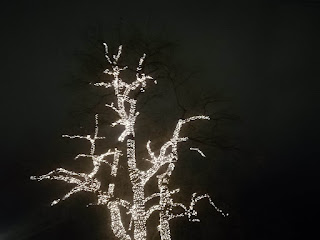Panis angelicus. Nourishment for the soul

The lyrics to the christmas song Panis angelicus was written by the theologian Thomas Aquinas in the 13th century. The first sentence: Panis angelicus fit panis hominum , means 'may the bread of angels become the bread of mankind'. In the original context this was about the eucharist. To me today however it points to something deeper: a longing for nourishment for the soul. There is a tenderness and vulnerability in this longing. And in a way its not hard to find sources of nourishment - connecting with others, being in nature, creating, enjoying the beauty of art. But to me the longing also points to something less obvious, something to do with the parts of us which traditionally have been expressed in religious and spiritual practices. How to understand this longing now, when most people reject organized traditional religion and find it irrelevant? In his book The darkening spirit. Jung, spirituality, religion. David Tacey argues that we have a postsecular so...
